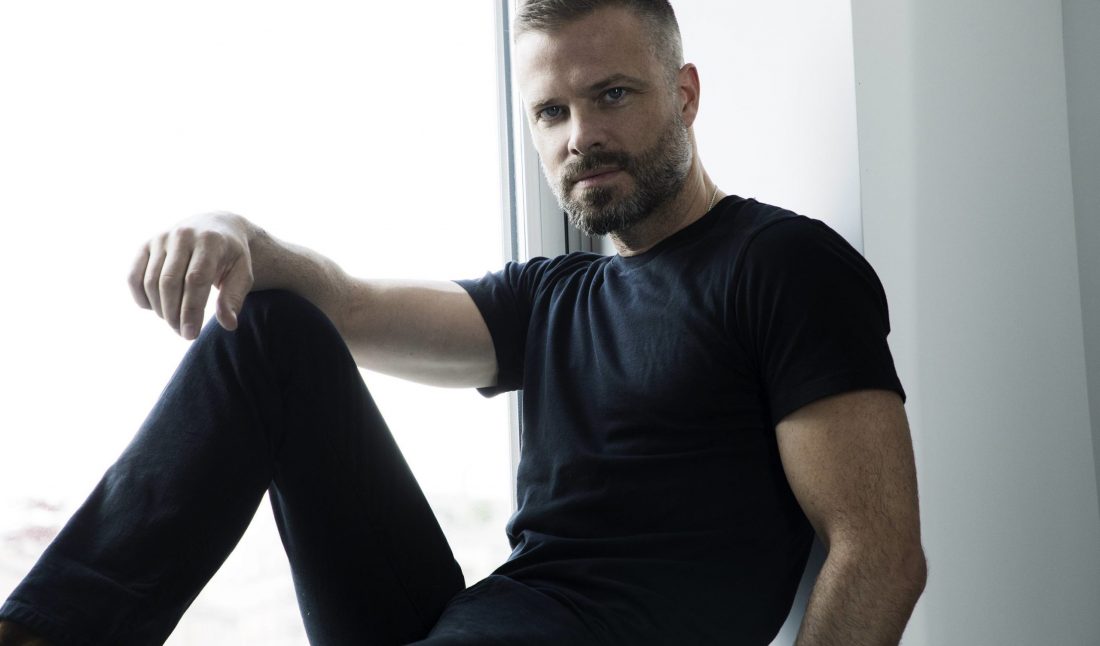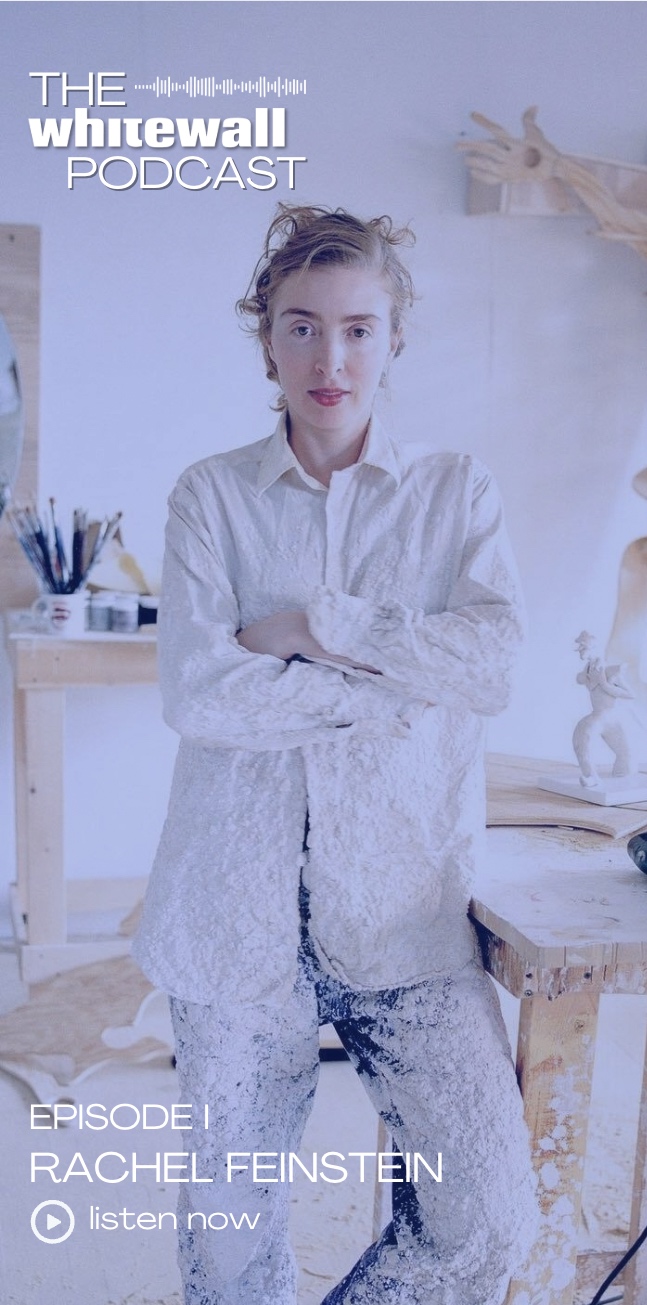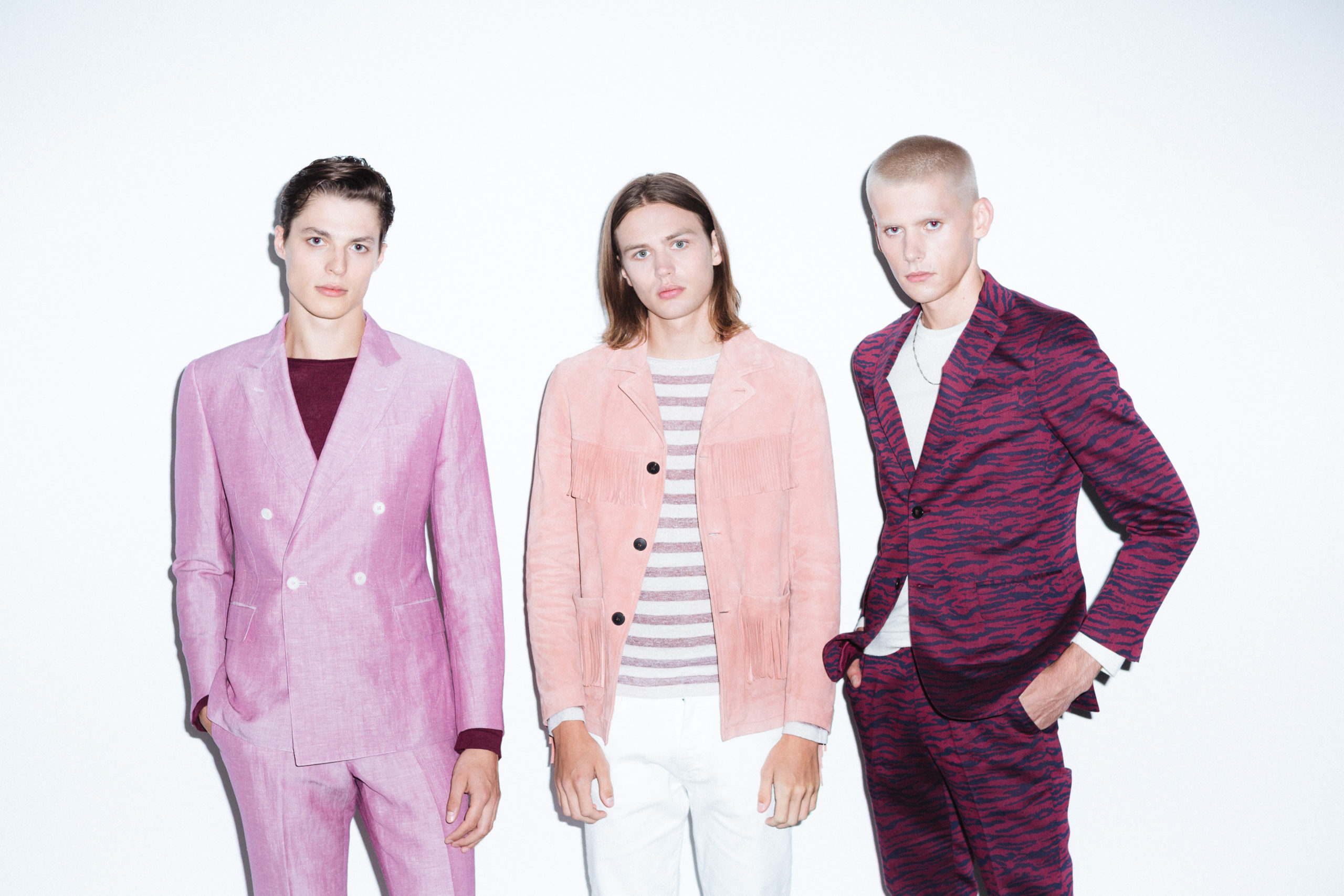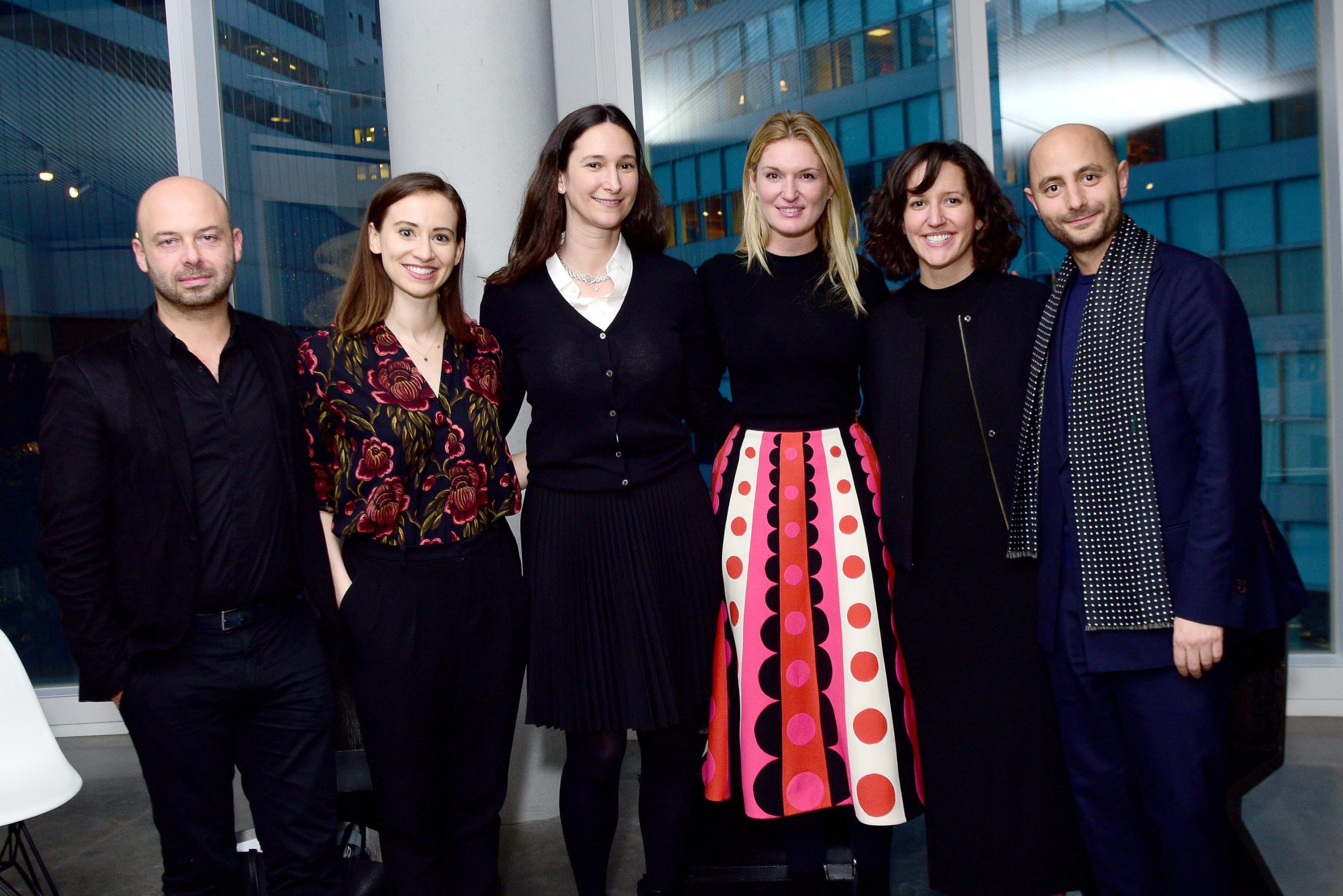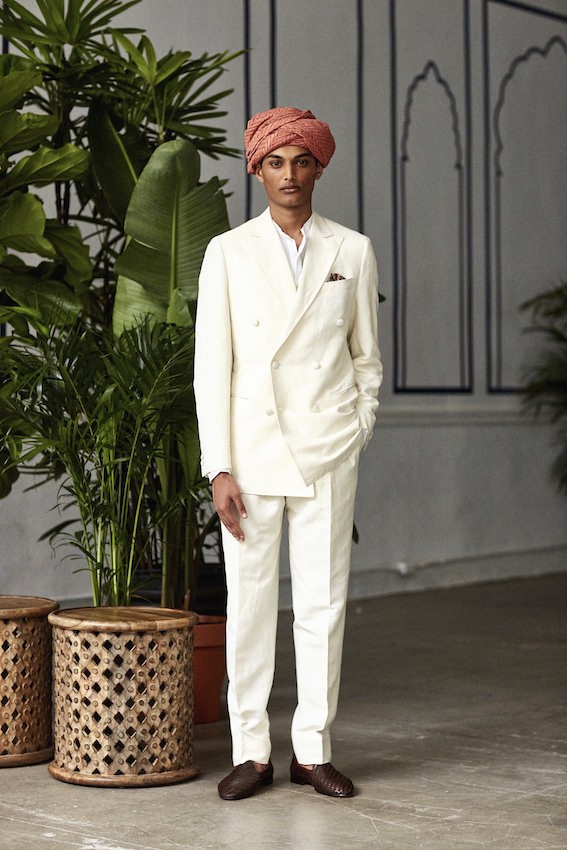Simon Spurr comes from a family of artists. When his teachers noticed his knack for drawing, they encouraged him to pursue fashion. He studied men’s fashion design at Middlesex University and went on to work at Saint Laurent, Calvin Klein, and Ralph Lauren. In 2006, he launched his own eponymous menswear line, SPURR, which included suiting, sportswear, and accessories.
Last year he was appointed creative director of EIDOS, with his first collection being Fall/Winter 2018–19. He was tasked with infusing the label with a more contemporary feel, which he did with his signature British attention to detail and affinity for American sportswear. Looking to the work of artists like Carmen Herrera and Sol LeWitt, he added a graphic code that he’ll continue to play with in patterns and prints for future collections.
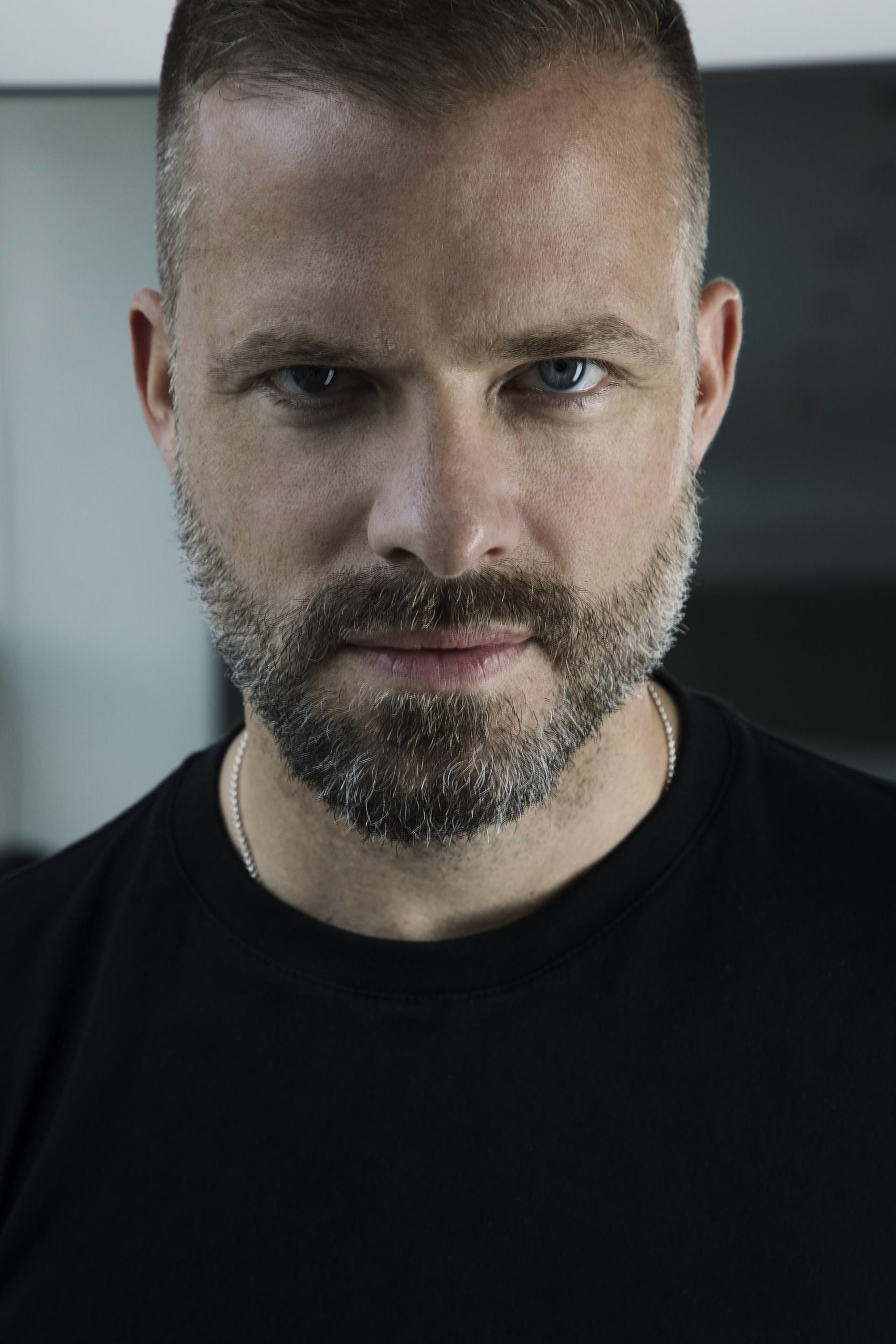 Photo by Steve Benisty
Photo by Steve Benisty
And Spurr’s artistic upbringing has remained with him, not just when it comes to finding points of reference for the next collection. Between leaving his label and starting at EIDOS, he created lighting design and sculptural furniture, which he showed at Salone del Mobile in Milan.
Whitewall spoke with Spurr about what it means to be a creative and how the generation Z consumer will ultimately good for the future of fashion.
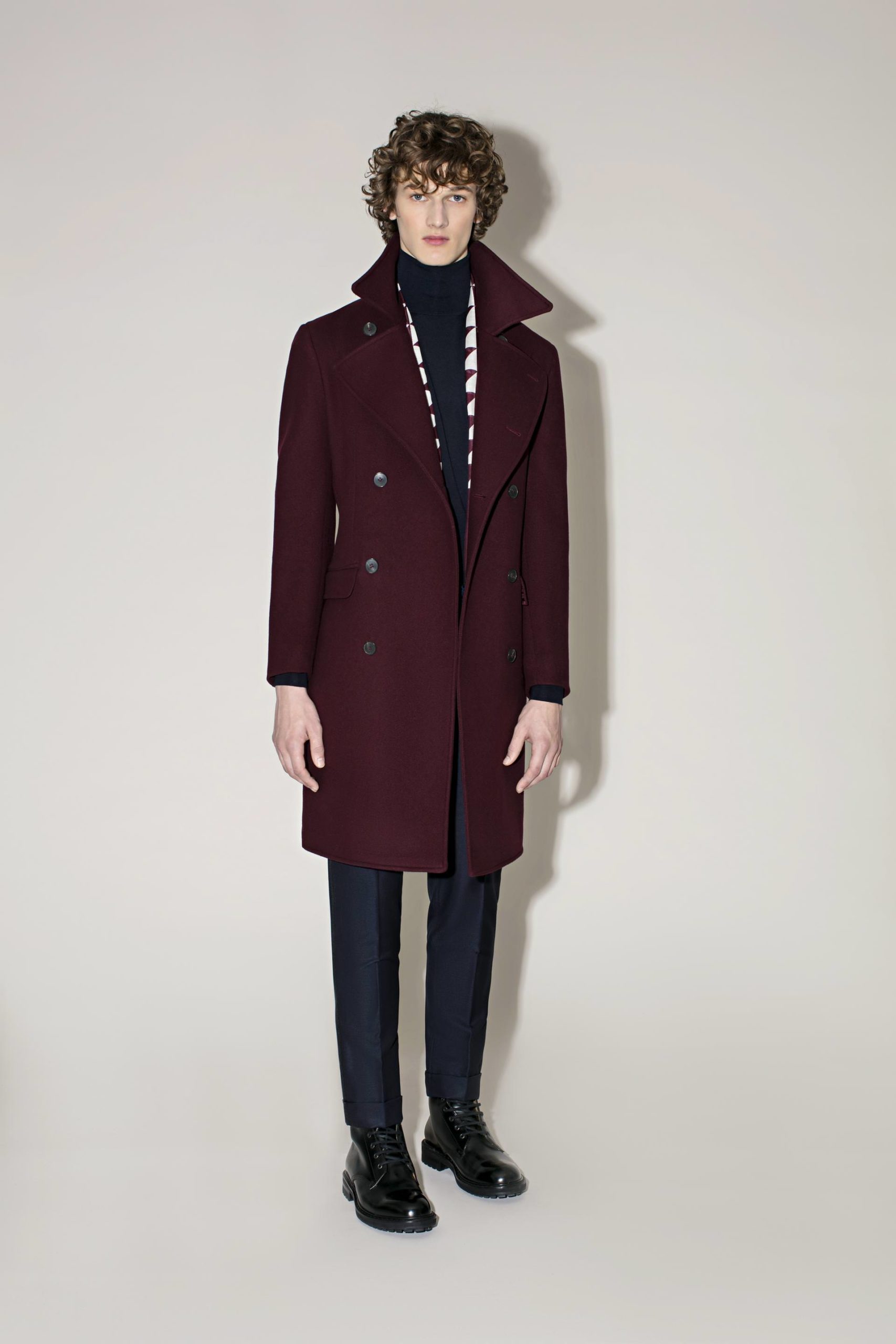 EIDOS fall/winter 2018.
EIDOS fall/winter 2018.
WHITEWALL: What made you want to study menswear, initially?
SIMON SPURR: I went to art school and I wanted to go into illustration or concept design, and two of my tutors pushed me into fashion. I kind of fell into it, and once I was set on my path, I just got that work mentality and got my head down and persevered. And then was extremely fortunate to have met the key individuals and mentors that I did along the way—from Hedi [Slimane] to Calvin [Klein] and Ralph [Lauren]. How lucky am I to have worked with them?
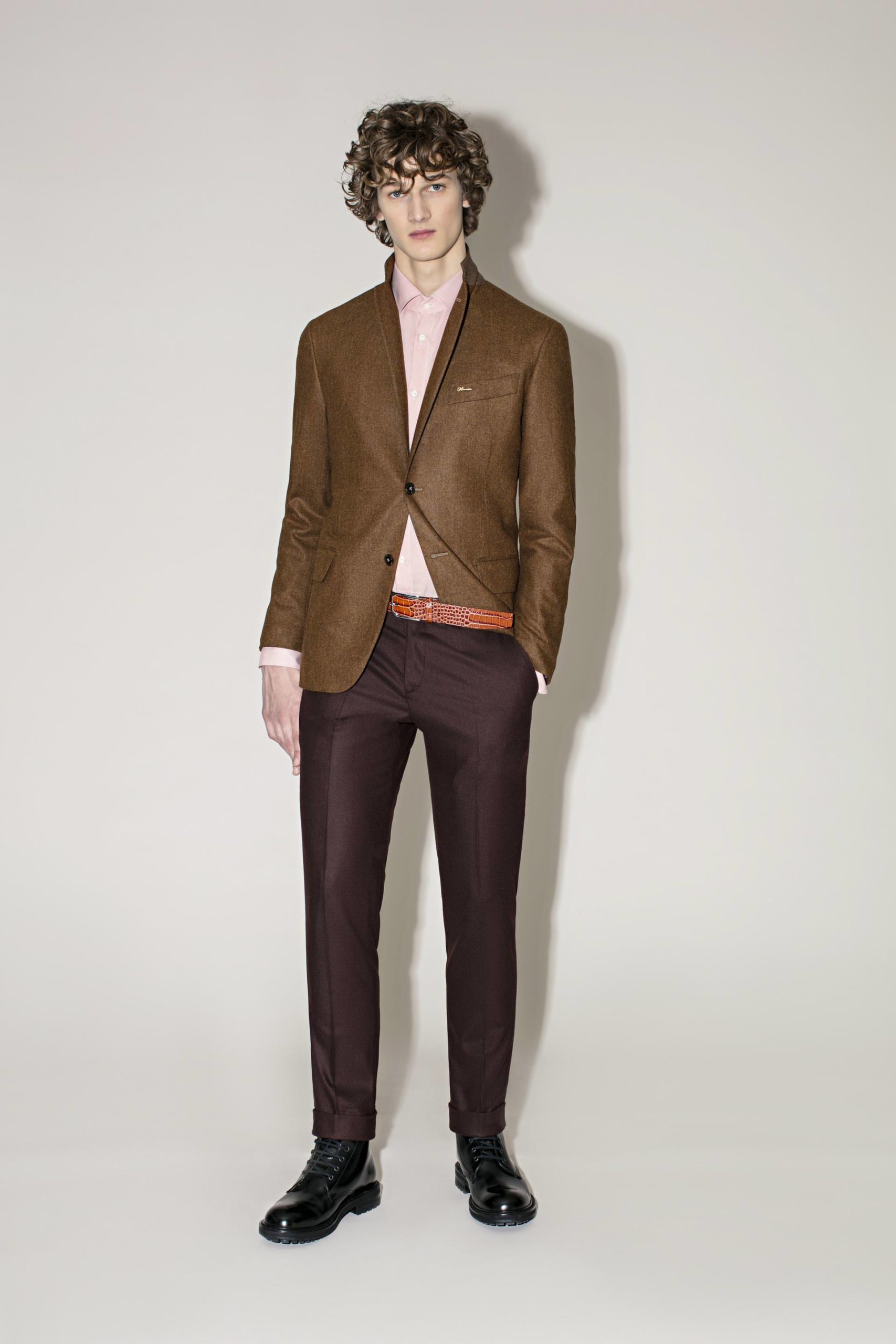 EIDOS fall/winter 2018.
EIDOS fall/winter 2018.
WW: How do you think your British upbringing mixed with working for such major American designers?
SS: I think, inherently, the Britishness is always within me. Even with this collection, using Italian fabric, using these rich colors; but ultimately there are definitely undertones of British detailing. That’s become my aesthetic.
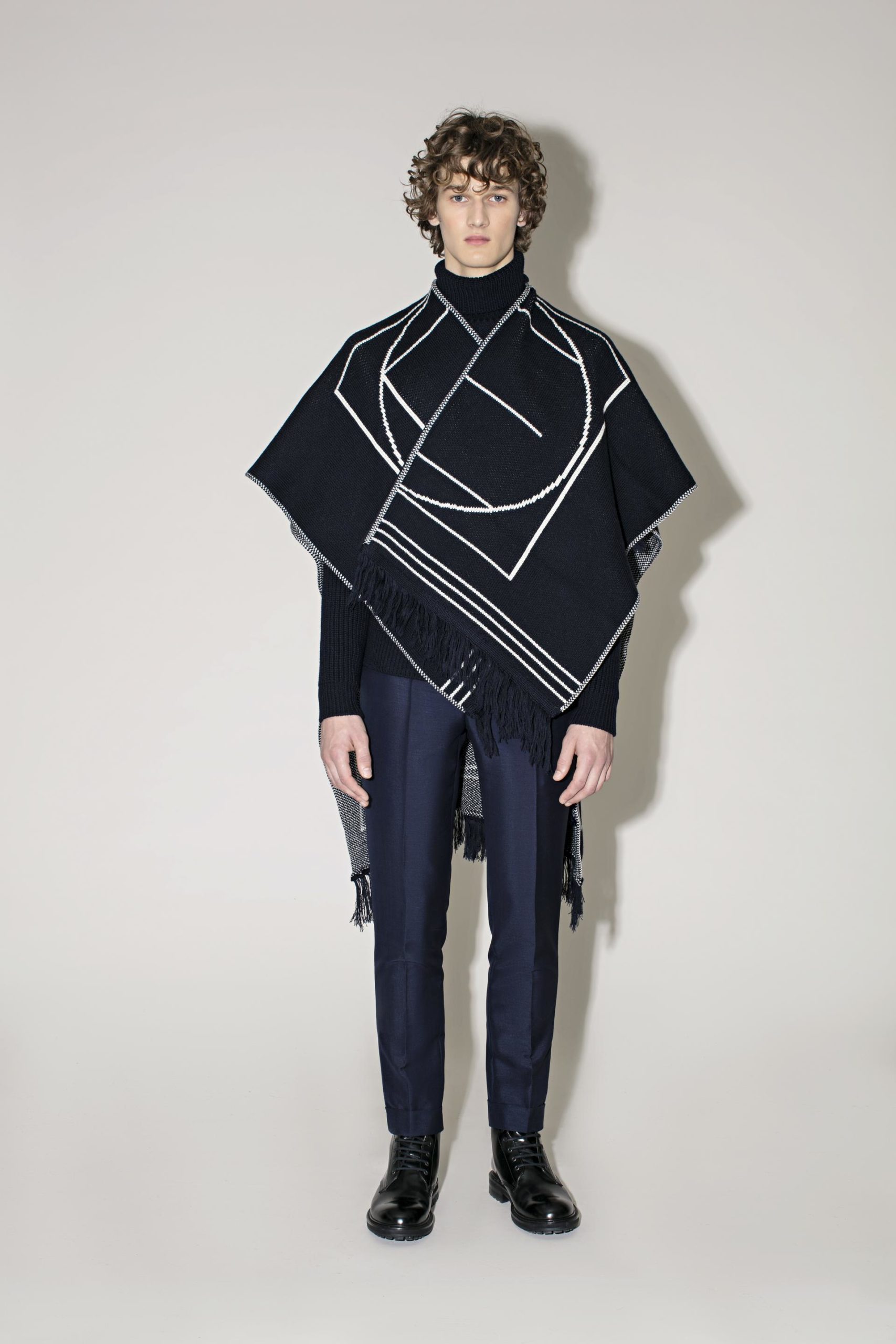 EIDOS fall/winter 2018.
EIDOS fall/winter 2018.
Being an Englishman who has been living in the States for so long gives me a global approach. I don’t really see menswear having borders and boundaries. As we’ve moved more away from traditional tailoring and into this sportswear moment, the rules of menswear have diminished. It’s a chance to rewrite the rules of menswear, which I find exciting.
With menswear, there are these rules, these dos and don’ts, how you’re meant to wear a product—always the last button undone, things like that. I’m looking at those and reconsidering them for a modern guy. I took the buttons off of a jacket and created a seamed detail that was reminiscent of a military epaulette.
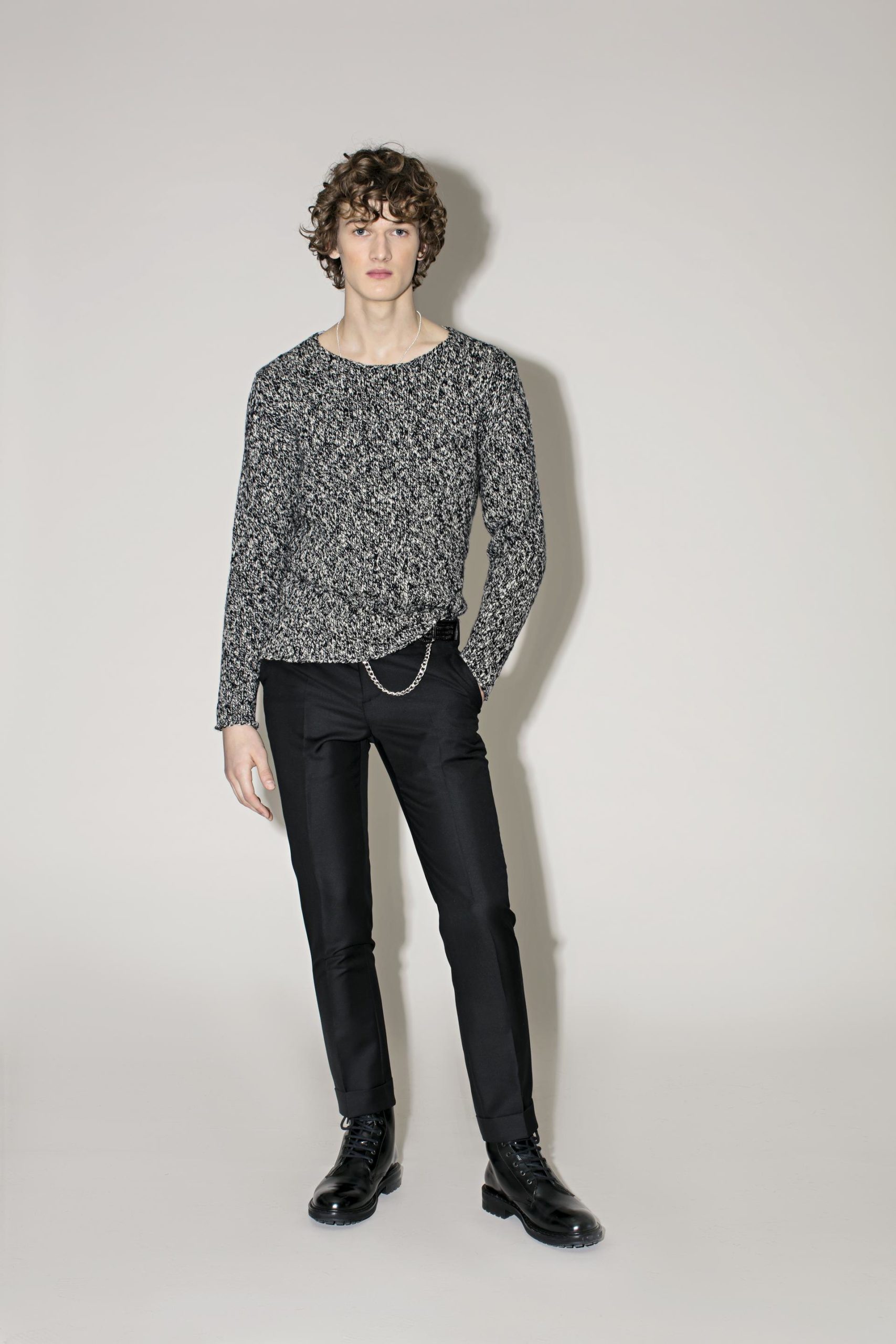 EIDOS fall/winter 2018.
EIDOS fall/winter 2018.
WW: Are there things you would like to see explored more in menswear?
SS: I think wherever there’s a great action, there are always people with the opposite reaction. I’m pleased that generation Z seems to be more conscious of where things are made, how things are made. They’re buying less disposable fashion. They’re buying pieces with resale value in mind, which means that they’re focusing more on quality.
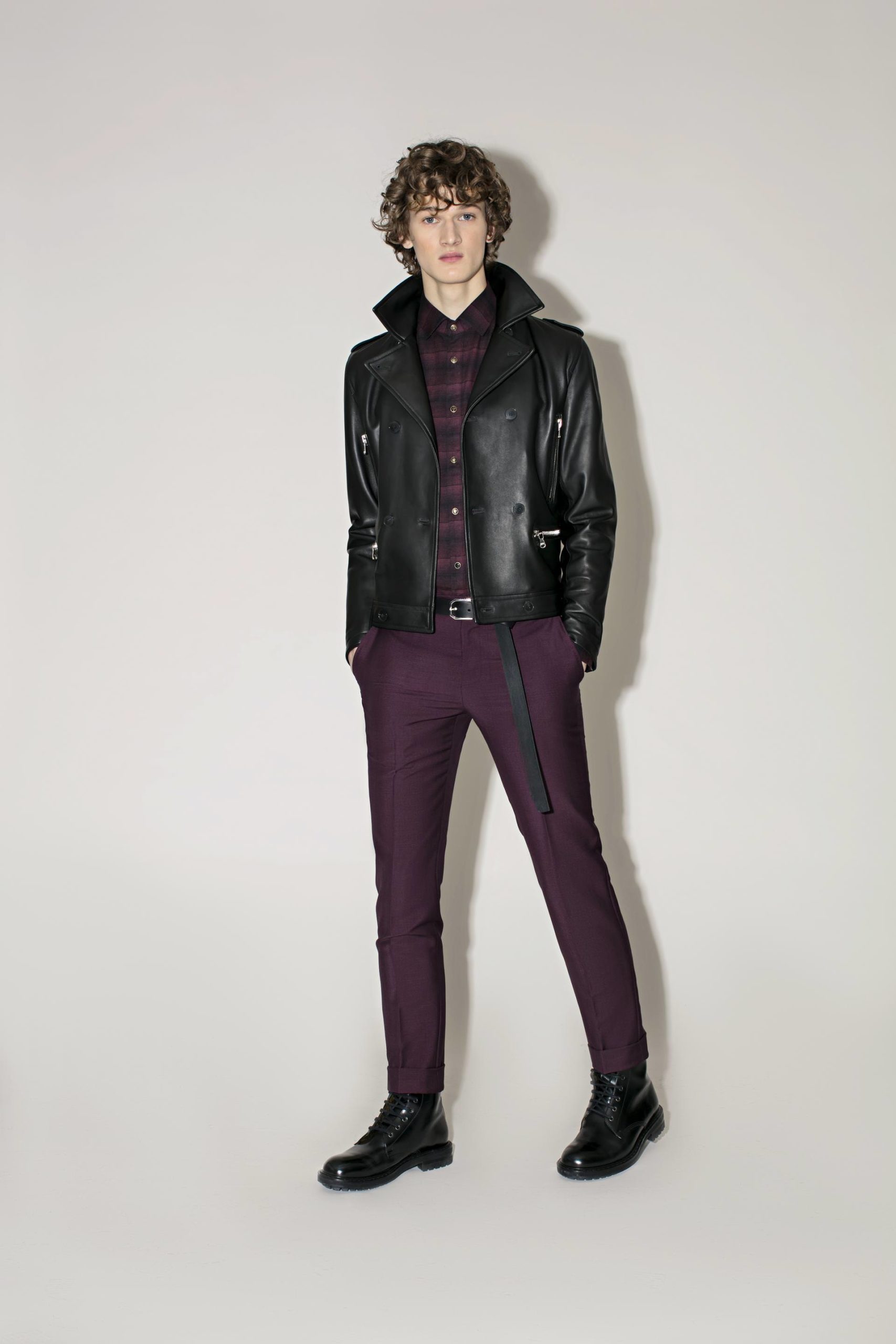 EIDOS fall/winter 2018.
EIDOS fall/winter 2018.
Having spent most of my career working in Italy or with Italian manufacturing, I think it’s important to nurture and preserve these crafts and these traditions, and it’s nice when you get a younger generation that respects and supports that. The consumer is the future of fashion. How they make the conscious decision to buy a product will shape how we design.
WW: Before joining EIDOS, you worked on furniture and sculpture. Can you tell us about that?
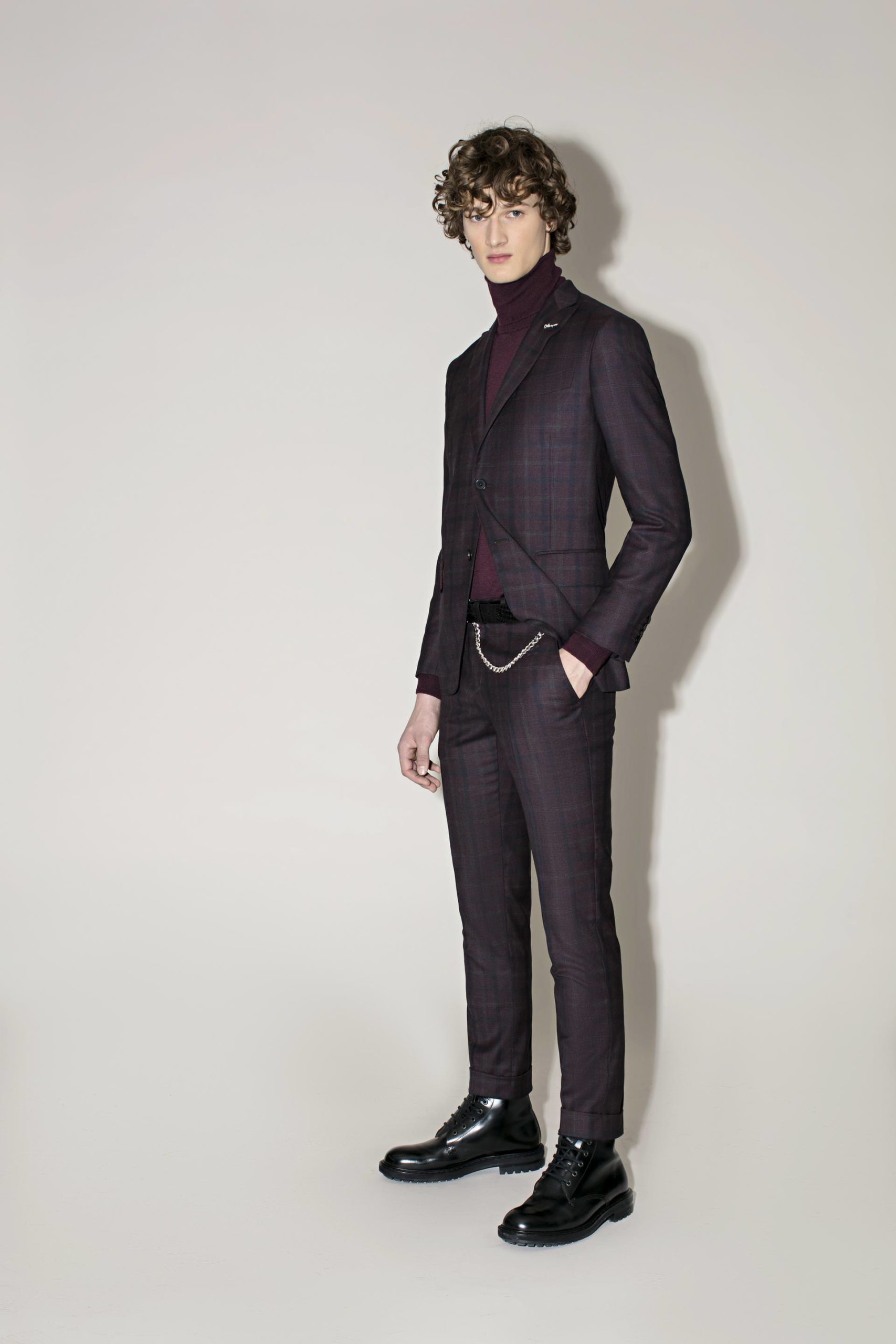 EIDOS fall/winter 2018.
EIDOS fall/winter 2018.
SS: I was very fortunate to have some paid time off, so to speak. That’s the second time that I’ve had this. When I left my brand almost six years ago, naturally there’s a reflection point. I almost wanted to reinvent myself, or showcase myself beyond just being a menswear designer. So last year I doubled down on that and got some projects off the ground in a more substantial way.
I worked on some brass and ostrich-skin floor lamps, which I took to Salone del Mobile in Milan in 2016. I also continued developing some sculpture in Carrara, which ostensibly is a spindle-back chair, made from marble that has a steel skeleton inside.
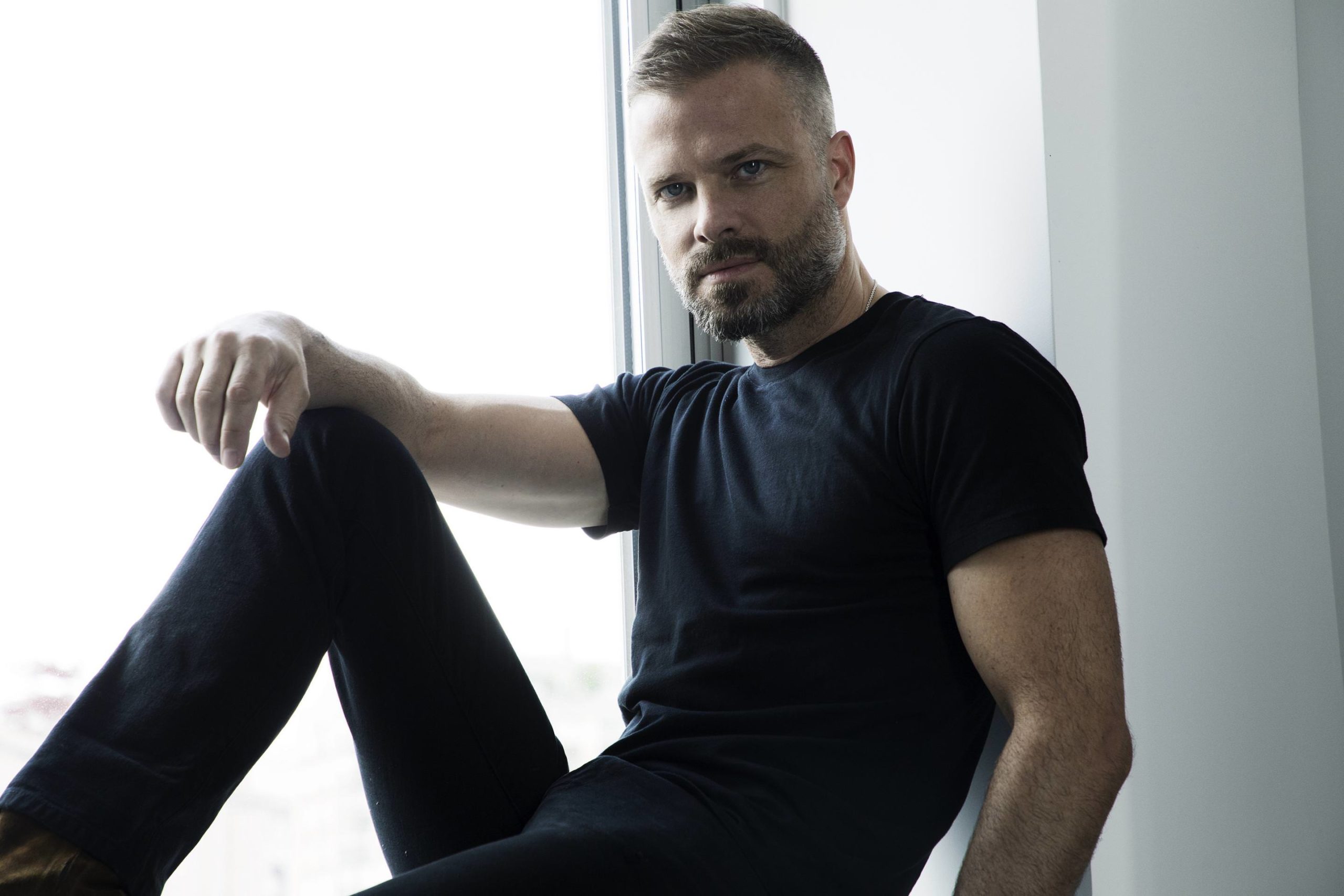 Photo by Steve Benisty
Photo by Steve Benisty
The chair was equally as much of an engineering project as it was a sculpture project. You could sit on it, although I don’t recommend doing so. I really wanted to blur the line between how we normally see marble—busts or statues, countertops or bathrooms—and put it into a familiar object that had never been done before.
They’re ambitious projects, labors of love. But I’m a creative and that’s when I feel most in line with myself.
I’ve always imagined the future of any fashion brand going beyond the clothes, going into the space, provoking your reaction. I think brands are looking for that and that’s the way it will evolve. I was just getting a head start.
WW: For EIDOS’s Fall/Winter 2018–19 collection, how did you come to find inspiration in Sol LeWitt drawings?
SS: Prior to joining the brand, I had time for personal discovery. The word “otium” is Latin for detaching from one’s normal daily routine in pursuit of something more creative, philosophical, inspirational. I had been living this moment of otium prior to joining the company and I wanted to bring that fresh approach to this collection.
I wanted it to look unlike anything I had done before—either my namesake brand or any other brand I had worked for. In the process, I started looking at my favorite core themes of art and architecture and Sol LeWitt has always been one of my favorites. I’ve been many times to Dia:Beacon and seen many of his wall drawings. There’s a mathematic and precision and a consideration that I love about his work that’s something I’ve always echoed in my work.
And you have to as a menswear designer. You have to be more precise about the details and the fit and the proportion of collar to pocket to length.
And then the topcoats are all named after architects. The burgundy one here is the Marcel Breuer. The camel one is the Louis Kahn. And even the scarf with the half-diagonal square I picked up from Marcel Breuer’s IBM building. When the light comes across them, it creates this very dramatic half-square shadow on the building. Hopefully, that will be something that we maintain going through the seasons.
WW: For you, was this collection about establishing the codes and setting the tone for what’s coming next?
SS: Definitely. I wanted this collection to be very accessible—to appeal to a wide age range.
In changing the aesthetic from where it was, which was my brief, I didn’t go too far, because I thought this would be a platform. Spring will be a nudge on. Spring will obviously be a little more whimsical, with a ton of print. I think as we move into this digital age, print and having a graphic presence is key.
WW: Do you collect?
SS: Furniture, for sure. I’ve got a lot of midcentury modern. You can actually see on my personal website; there’s a lot of imagery there. I’ve collected a lot of Mies van der Rohe and Paul McCobb. I’ve got a lot of Curtis Jere sculptures—from the birds to some marble and bronze pieces. I made an investment a few years ago into a first serious piece of art, which was a Warhol. It’s the “Vote McGovern” work. They were printed by Warhol to raise money for McGovern running against Nixon.
WW: So it’s a real mix for you of sculpture, fashion, and design.
SS: It’s all materials, it’s all proportion, it’s color. Thankfully, our industries are more open to cross-pollination and moving between disciplines, so it’s only a good thing for people to embrace that. Why can’t we transcend and give our aesthetic to a wider audience?







